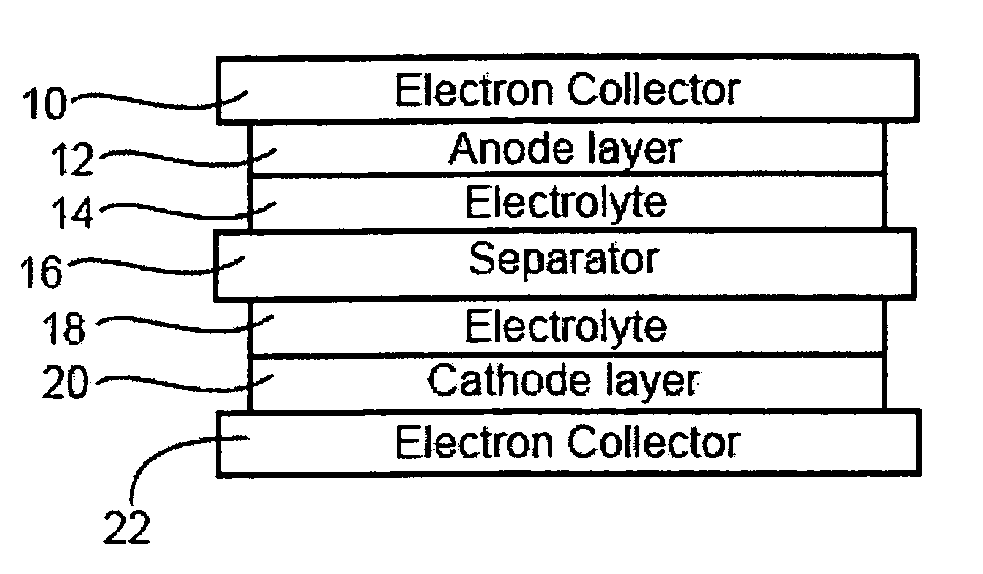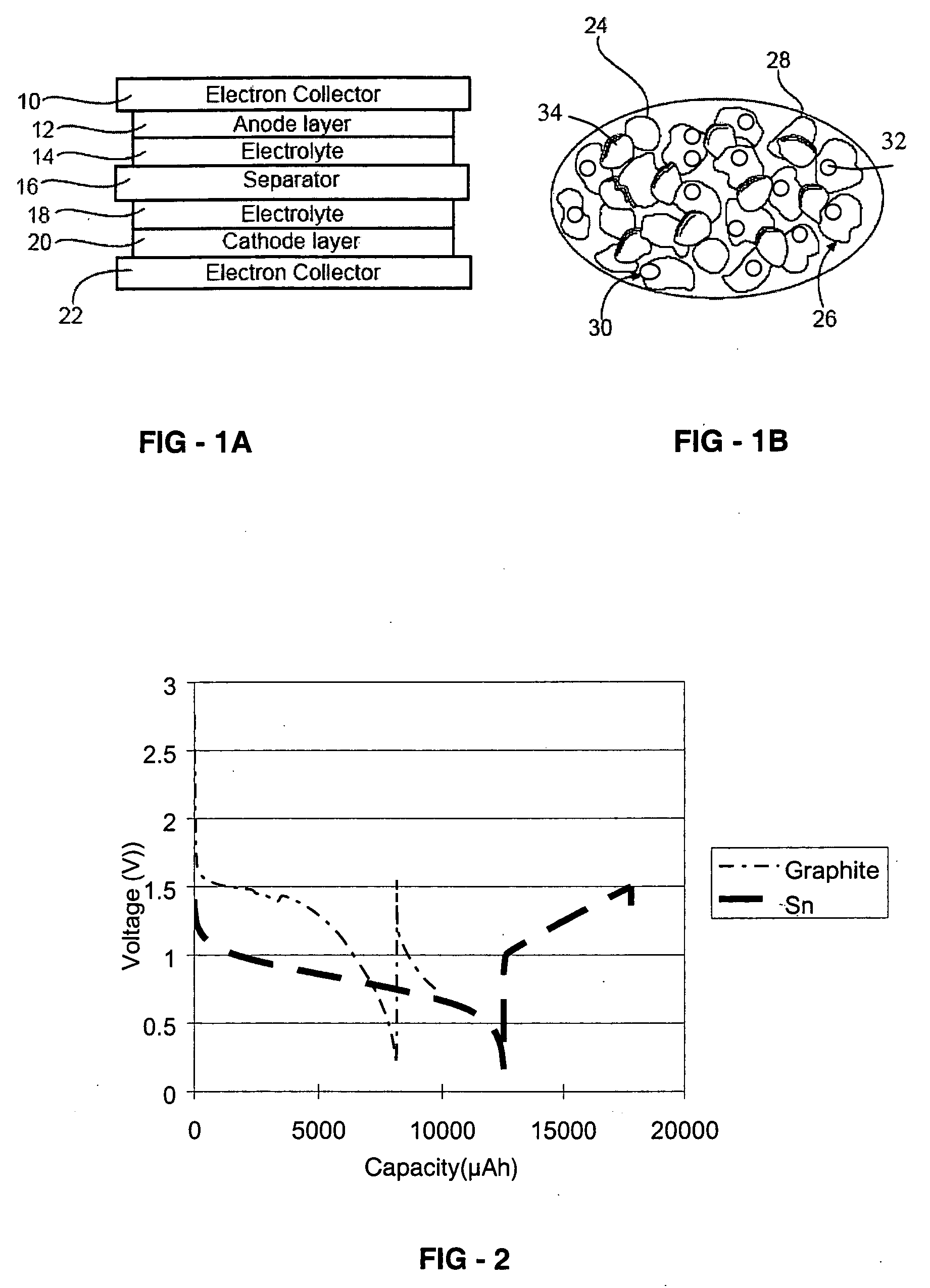Battery with tin-based negative electrode materials
a negative electrode material and battery technology, applied in the field of batteries, can solve the problems of high vapor pressure of electrolyte, flammability, explosion, and inability to apply negative electrode materials with high capacity, and achieve the effect of slow decomposition of electrolyte and contributing to the performance or stability of the battery
- Summary
- Abstract
- Description
- Claims
- Application Information
AI Technical Summary
Benefits of technology
Problems solved by technology
Method used
Image
Examples
example 1
[0038] The positive electrode was fabricated by intimately mixing 85 wt % Sn-based powder, 10 wt % carbon powder as electron conductive materials, and 5 wt % solvent of polyvinylidene fluoride in N-methylpyrrolidone. To form the positive electrode film, the mixed slurry was cast onto copper foil using a doctor blade and dried at 80° C. for 30 minutes.
[0039] Lithium metal foil was used as negative electrode.
[0040] The positive electrode sheet, a micro-porous polypropylene film separator, and the negative electrode sheet with an area of 2.83 cm2 were stacked, and placed in aluminum laminate pack. A certain amount of molten salt electrolyte was added in to the laminate pack. Here, methyl-propyl-pyrrolidinium-bis-trifluoro-sulfonylamide (MPP-TFSI) with lithium-bis-trifluoromethan-sulfonylamide (LiTFSI) was used as the molten salt electrolyte.
example 2
[0041] The positive electrode was fabricated by intimately mixing 92.5 wt % carbon graphite powder, and 7.5 wt % solvent of polyvinylidene fluoride in N-methylpyrrolidone. To form positive electrode film, the mixed slurry was cast onto copper foil by using doctor blade and dried at 80° C. for 30 minutes.
[0042] Lithium metal foil was used as negative electrode.
[0043] The positive electrode sheet, a micro-porous polypropylene film separator, and the negative electrode sheet with an area of 2.83 cm2 were stacked, and placed in an aluminum laminate pack. A certain amount of molten salt electrolyte was added in to the laminate pack. Here, methyl-propyl-pyrrolidinium-bis-trifluoro-sulfonylamide (MPP-TFSI) with lithium-bis-trifluoromethan-sulfonylamide (LiTFSI) was used as the molten salt electrolyte.
Other Tin-Containing Materials
[0044] The tin-containing material can comprise particles, such as microparticles (for example, diameter range 1-500 microns), nanoparticles (diameter range ...
PUM
| Property | Measurement | Unit |
|---|---|---|
| diameter | aaaaa | aaaaa |
| diameter | aaaaa | aaaaa |
| diameter | aaaaa | aaaaa |
Abstract
Description
Claims
Application Information
 Login to View More
Login to View More - R&D
- Intellectual Property
- Life Sciences
- Materials
- Tech Scout
- Unparalleled Data Quality
- Higher Quality Content
- 60% Fewer Hallucinations
Browse by: Latest US Patents, China's latest patents, Technical Efficacy Thesaurus, Application Domain, Technology Topic, Popular Technical Reports.
© 2025 PatSnap. All rights reserved.Legal|Privacy policy|Modern Slavery Act Transparency Statement|Sitemap|About US| Contact US: help@patsnap.com


